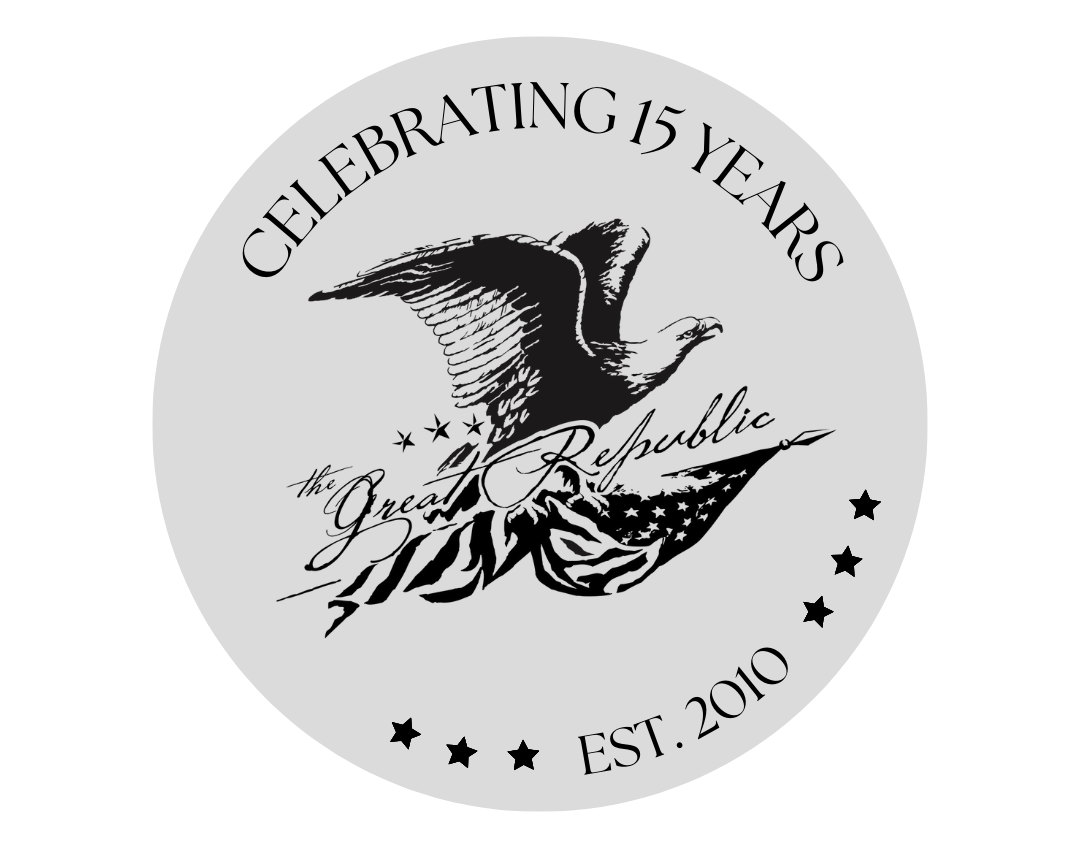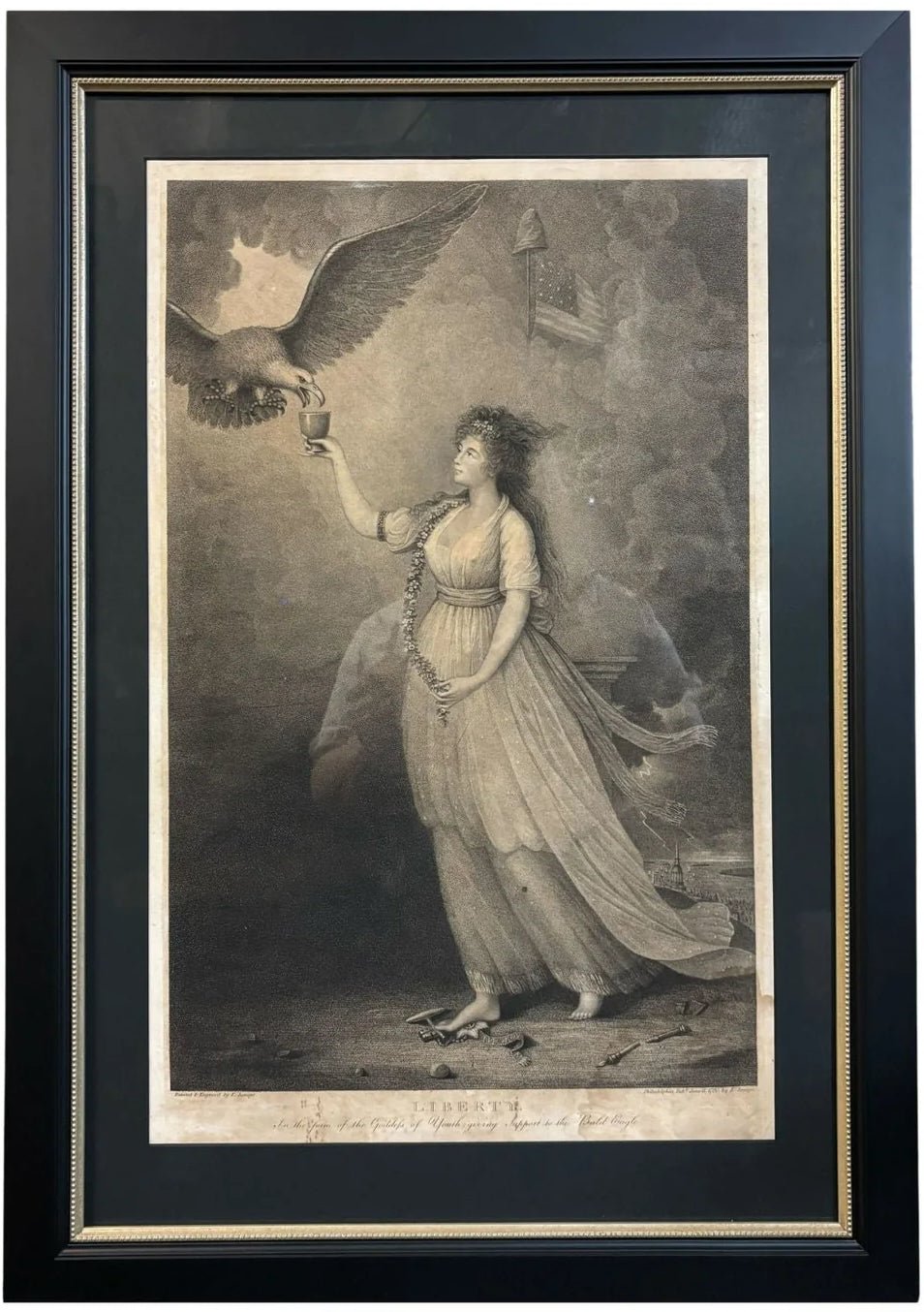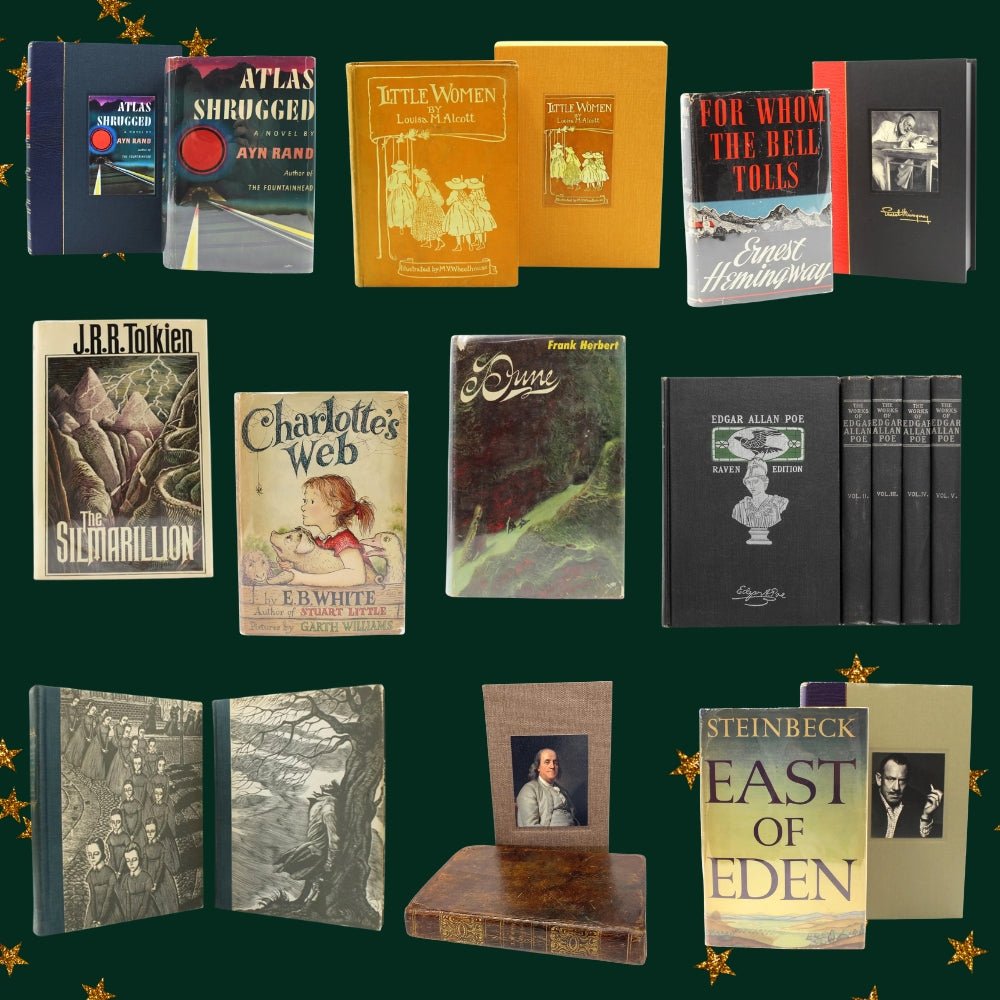Two Rare Printings of the Declaration of Independence

Few documents embody the American spirit as profoundly as the Declaration of Independence, and few artifacts capture its enduring legacy as beautifully as these two rare historical printings. Although created nearly half a century apart, each reflects the era’s reverence for the nation’s founding ideals: one as a refined early 19th-century keepsake, the other as a vibrant celebration of America’s centennial.
Our circa 1830 silk broadside, printed by James Conner in New York, represents one of the earliest fabric printings of the Declaration. Following the War of 1812, Americans began to look back with nostalgia and pride for their generation of founding fathers. Printers and engravers met this new appetite for patriotic mementos with elaborate editions of the Declaration. Several of them, like this silk example, were intended as treasured display pieces rather than utilitarian broadside texts. Conner’s silk printing embodies this spirit of reverence and artistry; the Declaration’s text is rendered in neat black letters, with key words like “Life,” “Liberty,” and “Rights of the People” highlighted in elegant capitals. A majestic spreadwing eagle surmounts the text, clutching a bundle of arrows and laurel leaves, a symbolic union of defense and peace, while accompanied by the verse, “When God from chaos gave the world to be, Man then he formed, and formed him to be free!”
Printed on delicate silk, this piece would have been both costly and rare even in its own time. Silk broadsides were produced in limited numbers, often as special “presentation” copies. Surviving examples are exceedingly scarce due to the fragility of their medium, making this example a remarkable survivor. Now handsomely framed in a custom gold frame, it stands as a luminous tribute to America’s early republic and the printmakers who sought to immortalize its founding words.
In contrast, the circa 1876 cotton printing brings us to a new chapter in America’s self-reflection, the Centennial celebration. A century after the Declaration’s signing, patriotism once again swept the nation, culminating in the grand Philadelphia Centennial Exhibition, the first World’s Fair held on American soil. This colorful cotton textile, printed as a commemorative bandana, captures the exuberance of that era. The design centers on an artistic rendering of the Declaration beneath a Liberty Bell header, surrounded by a vivid red border of columns, laurel leaves, and the seals of the thirteen original colonies. The facsimile signatures of those important signers appear to the right of the text, a nod to the men whose bold and courageous resolve shaped our nation’s history.
Unlike the silk broadside’s refined augustness, this cotton printing was a democratic piece, sold to the general public. These textiles were proudly worn, waved, or displayed during the Centennial year, and oftentimes discarded after the festivities. As a result, few original examples of ephemera like this bandana survive today, in any condition. This one, carefully preserved and archivally framed, bears the gentle marks of age, with slight fading and some border loss, yet still stands as a tangible remnant of 1876’s national jubilee.
Together, these two Declarations trace America’s evolving relationship with its own founding document: the 1830 silk printing reflects the nation’s early reverence and romantic nostalgia for its origins, while the 1876 cotton edition embodies a later era’s jubilant pride and popular celebration. Both are remarkable testaments to how generations of Americans have honored, in word, image, and fabric, the Declaration of Independence.
Also Consider:
The Lives of the Signers of the Declaration of Independence by N. Dwight, 1860

Explore a remarkable piece of early American history with this 1860 edition of The Lives of the Signers of the Declaration of Independence by Nathaniel Dwight. First published in 1830, this later edition presents detailed biographical sketches of the fifty-six men who signed one of the nation’s most important founding documents. Rebound in ¼ leather and cloth boards with gilt titles and raised bands, and housed in a matching archival slipcase, this volume beautifully preserves Dwight’s original intent to educate readers about the courage, character, and legacy of the patriots who shaped the United States.
 This finely detailed steel engraving, published circa 1855 in John H. Hinton’s The History and Topography of the United States of America, beautifully captures the facsimile signatures of the signers of the Declaration of Independence. Engraved by J. W. Allen with ornamental work by A. H. Wray and E. McCabe, the composition features allegorical figures of Justice and Liberty, a spreadwing eagle, and the seals of the original thirteen colonies. Endorsed by John Quincy Adams in 1819 as a “correct copy” of the original document, this engraving stands as a striking blend of artistry and patriotism, reflecting the technical mastery and historical reverence characteristic of nineteenth-century American printmaking.
This finely detailed steel engraving, published circa 1855 in John H. Hinton’s The History and Topography of the United States of America, beautifully captures the facsimile signatures of the signers of the Declaration of Independence. Engraved by J. W. Allen with ornamental work by A. H. Wray and E. McCabe, the composition features allegorical figures of Justice and Liberty, a spreadwing eagle, and the seals of the original thirteen colonies. Endorsed by John Quincy Adams in 1819 as a “correct copy” of the original document, this engraving stands as a striking blend of artistry and patriotism, reflecting the technical mastery and historical reverence characteristic of nineteenth-century American printmaking.
Declaration of Independence Printed Scarf
This contemporary framed silk scarf celebrates the Declaration of Independence with striking patriotic artistry. Printed on white silk, the design features the full text and signatures of the Declaration in black, bordered by vivid red with blue squares and white stars at each corner. Expertly framed using archival materials in a custom gold frame, this piece beautifully honors America’s founding document, blending modern craftsmanship with timeless national pride.











